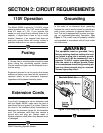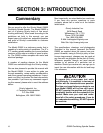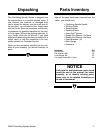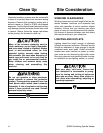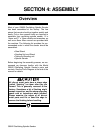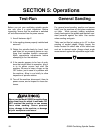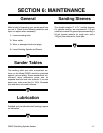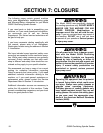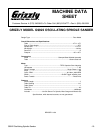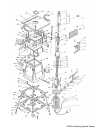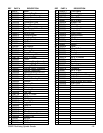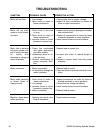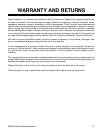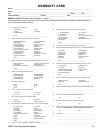
-16- G9922 Oscillating Spindle Sander
SYMPTOM
Motor will not start.
Motor will not start;
fuses or circuit break-
ers blow.
Motor fails to develop
full power (power out-
put of motor decreas-
es rapidly with
decrease in voltage at
motor terminals).
Motor overheats.
Motor stalls (resulting
in blown fuses or
tripped circuit).
Machine slows down
when operating.
TROUBLESHOOTING
POSSIBLE CAUSE
1. Low voltage.
2. Open circuit in motor or
loose connections.
1. Short circuit in line cord
or plug.
2. Short circuit in motor or
loose connections.
3. Incorrect fuses or circuit
breakers in power line.
1. Power line overloaded
with lights, appliances,
and other motors.
2. Undersized wires or cir-
cuits too long.
3. General overloading of
power company facili-
ties.
1. Motor overloaded.
2. Air circulation through the
motor restricted.
1. Short circuit in motor or
loose connections.
2. Low voltage.
3. Incorrect fuses or circuit
breakers in power line.
4. Motor overloaded.
Applying too much pres-
sure to workpiece.
CORRECTIVE ACTION
1. Check power line for proper voltage.
2. Inspect all lead connections on motor for
loose or open connections.
1. Inspect cord or plug for damaged insulation
and shorted wires.
2. Inspect all connections on motor for loose
or shorted terminals or worn insulation.
3. Install correct fuses or circuit breakers.
1. Reduce load on power line.
2. Increase wire sizes or reduce length of
wire.
3. Request a power check from the power
company.
1. Reduce load on motor.
2. Clean out motor to provide normal air circu-
lation.
1. Inspect connections on motor for loose or
shorted terminals or worn insulation.
2 Correct the low voltage conditions.
3. Install correct fuses or circuit breakers.
4. Reduce load on motor.
Feed workpiece slower.



